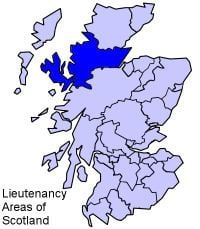 | ||
Ross and cromarty pipes and drums school
Ross and Cromarty (Scottish Gaelic: Ros agus Cromba) is a variously defined area in the Highlands and Islands of Scotland. There is a registration county and a lieutenancy area in current use, the latter of which is 8,019 square kilometres (3,096 square miles) in extent. Historically there has been a constituency of the Parliament of the United Kingdom (1832 to 1983), a local government county, also known as Ross-shire (1890 to 1975), a district of the Highland local government region (1975 to 1996) and a management area of the Highland Council (1996 to 2007). The local government county is now divided between two local government areas: the Highland area and Na h-Eileanan Siar (the Western Isles).
Contents
- Ross and cromarty pipes and drums school
- Ross and cromarty pipes and drums british pipe band championships final 2015
- Landscape
- Parliamentary constituency
- County
- District
- Since 1996
- Registration county
- Lieutenancy area
- References
The region has some of the most spectacular landscapes and some of the oldest rock formations in Europe. The rocks are of Cambrian and Precambrian age. The population is engaged mainly in fishing and tourism. The population as of 2001 was 49,967. Crofting is widespread.
Ross and cromarty pipes and drums british pipe band championships final 2015
Landscape
The district is famous for its mountainous scenery, especially in the west, in an area known as Wester Ross. It includes the Torridon Hills composed of Precambrian Torridonian sandstone over Lewisian gneiss, and capped by Cambrian quartzite. The latter rocks often give the appearance of a snow topping when they cap a specific peak. The Torridons comprise individual mountains such as Beinn Eighe and Liathach, with related peaks Slioch and An Teallach to the north. Although many peaks in the North-west highlands exhibit Torridon geology, the Torridon hills are generally considered only to be those in the Torridon Forest to the north of Glen Torridon. Specifically, these are:
Hills between Glen Torridon and Strath Carron share much of the splendour and character of the main hills, although perhaps less of the drama:
The Torridon Hills exhibit some of the most dramatic mountain scenery in the British Isles, surpassed in grandeur probably only by the Cuillins of Skye.
Parliamentary constituency
The name Ross and Cromarty was first used for the Ross and Cromarty county constituency of the Parliament of the United Kingdom from 1832 to 1983. As created in 1832, the constituency merged two former county constituencies: the Ross-shire constituency and the Cromartyshire constituency, and it elected a Member of Parliament to represent the counties of Ross-shire and Cromartyshire, minus their parliamentary burghs, Dingwall, Tain and Fortrose, which were represented as components of the Wick burghs constituency and the Inverness burghs constituency.
Constituency boundaries were altered in 1918, by the Representation of the People Act 1918, and the Ross and Cromarty constituency acquired the boundaries of the county of Ross and Cromarty, including the former parliamentary burghs, but minus Stornoway and Lewis, which became part of a new constituency, the Western Isles constituency.
In 1983, the Ross, Cromarty and Skye constituency was created to represent the then Ross and Cromarty district and Skye and Lochalsh district. The Kincardine area joined the Caithness and Sutherland constituency.
County
The local government county of Ross and Cromarty was created in 1890 under the Local Government (Scotland) Act 1889, with boundaries similar to, but not exactly the same as, the boundaries of the constituency. The county continued with largely unchanged boundaries until its abolition in 1975.
When the county was abolished in 1975, the mainland part became part of the new Highland Region, and Lewis became part of the Western Isles islands area.
District
In 1975 the mainland part of the former county was effectively divided between three districts of the Highland region. Most of the former county became the new district of Ross and Cromarty. The Lochalsh area joined the Skye and Lochalsh district and the Kincardine area joined the Sutherland district. The district was abolished in 1996.
Since 1996
The wards in the former district of Ross and Cromarty formed the management area of Ross and Cromarty from 1996 to 1999, and again from 1999 to 2007. The name was not used for a management area after 2007.
Registration county
The registration county of Ross and Cromarty, used for land registry purposes, covers the area of the former county of Ross and Cromarty, including Lewis.
Lieutenancy area
Lieutenancy areas are subdivisions used for the ceremonial lord lieutenants, the monarch's representatives. The Ross and Cromarty lieutenancy area combines the areas of two former districts of the Highland region: Ross and Cromarty, and Skye and Lochalsh. The area therefore includes the mainland part of the registration county and former administrative county of Ross and Cromarty, excluding Kincardine, with the addition of the Isle of Skye, which is in the registration county (and former administrative county) of Inverness-shire.
